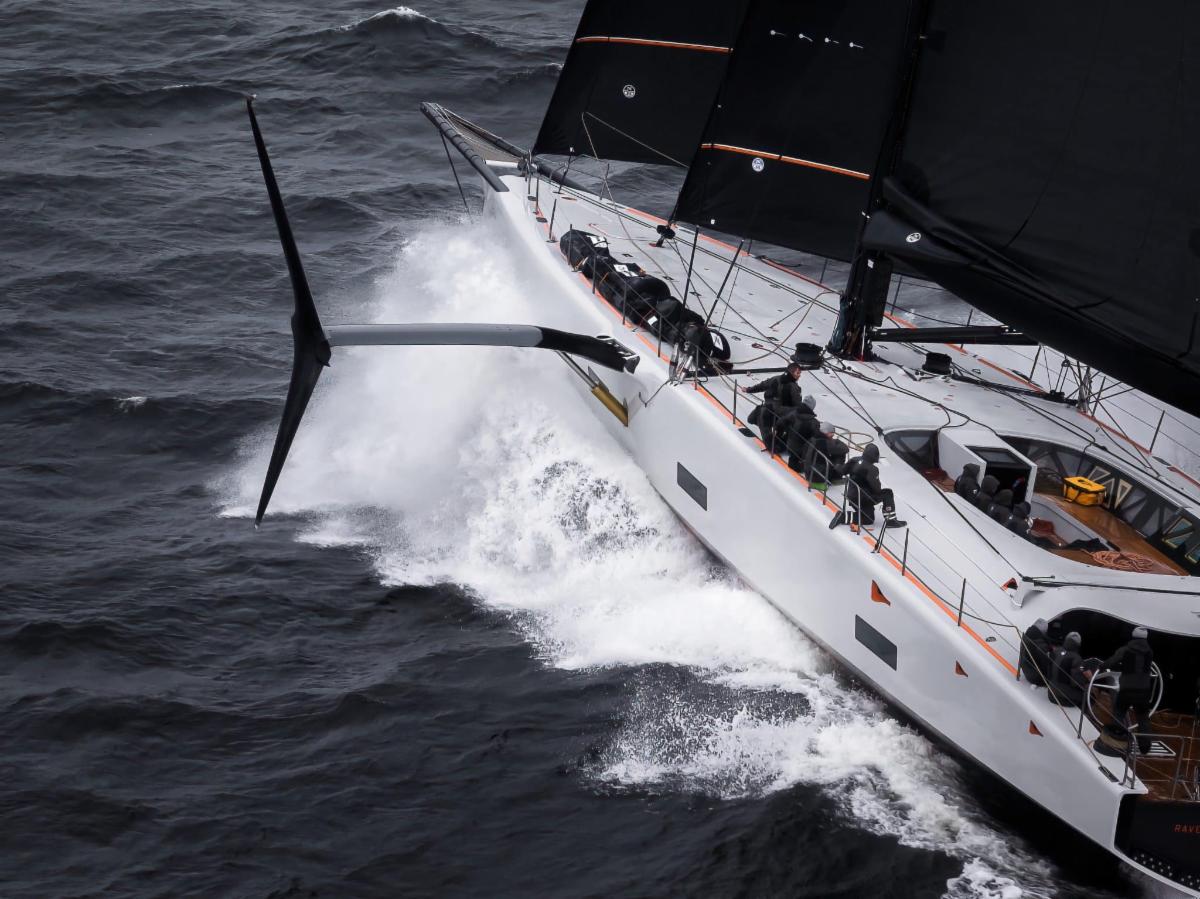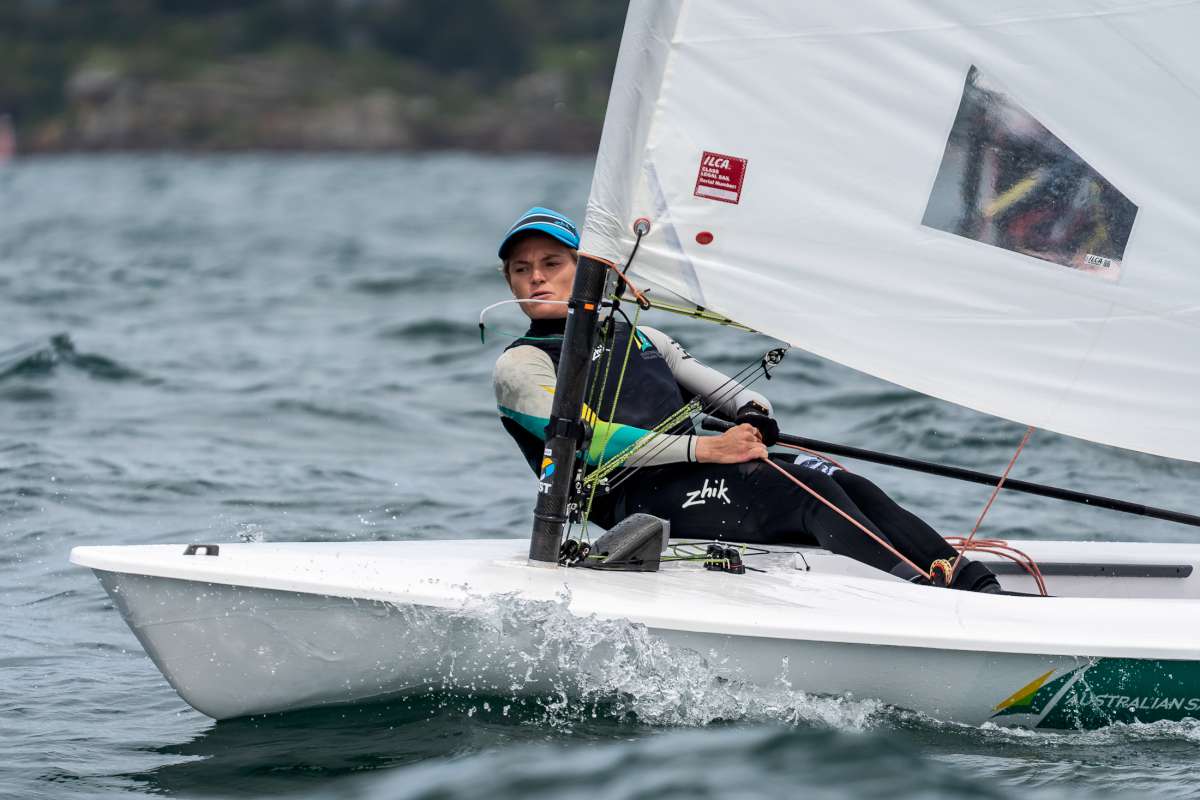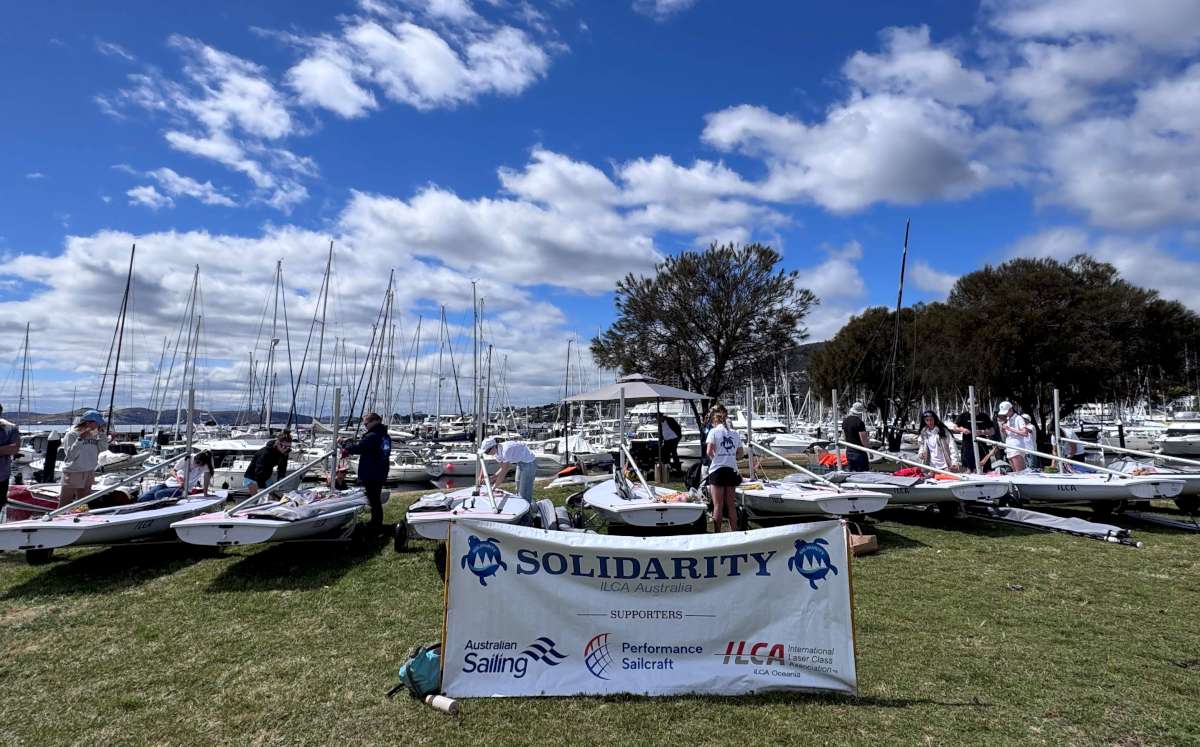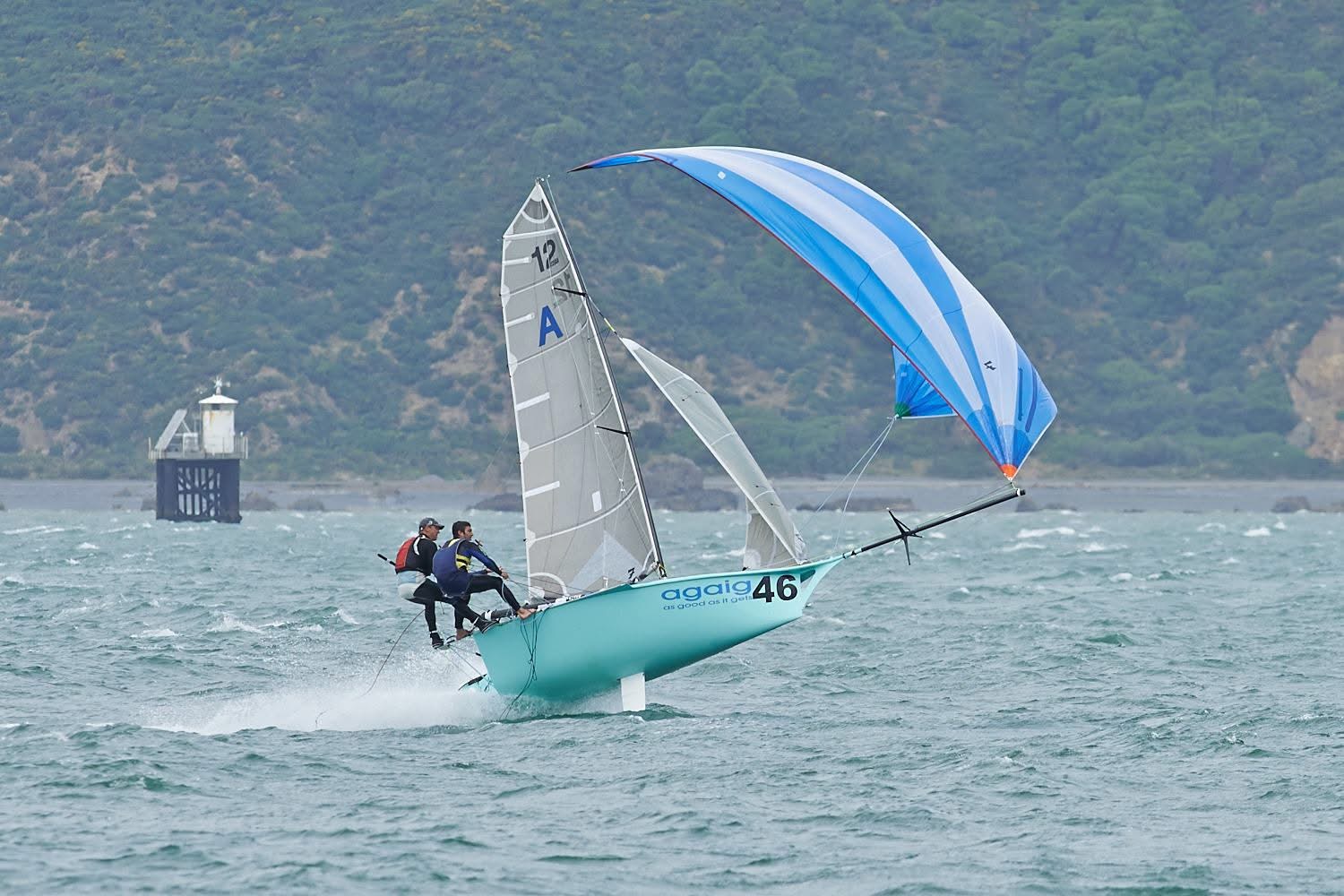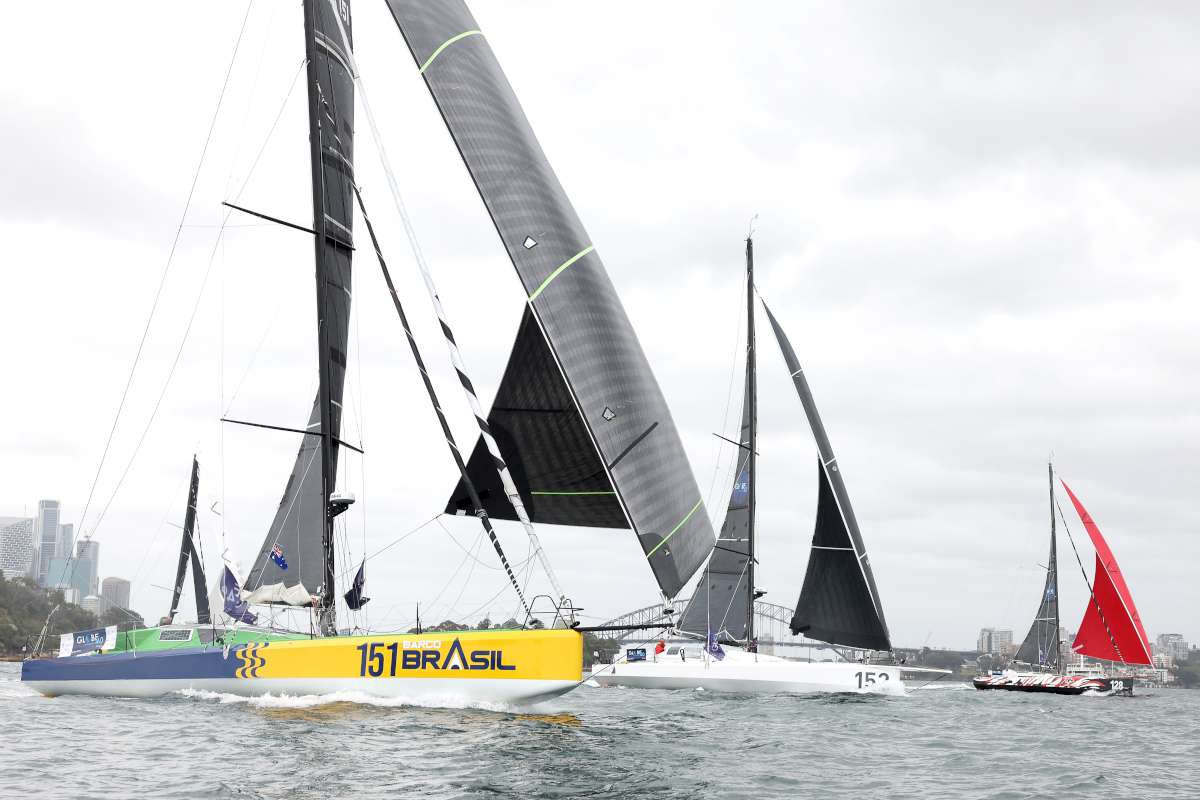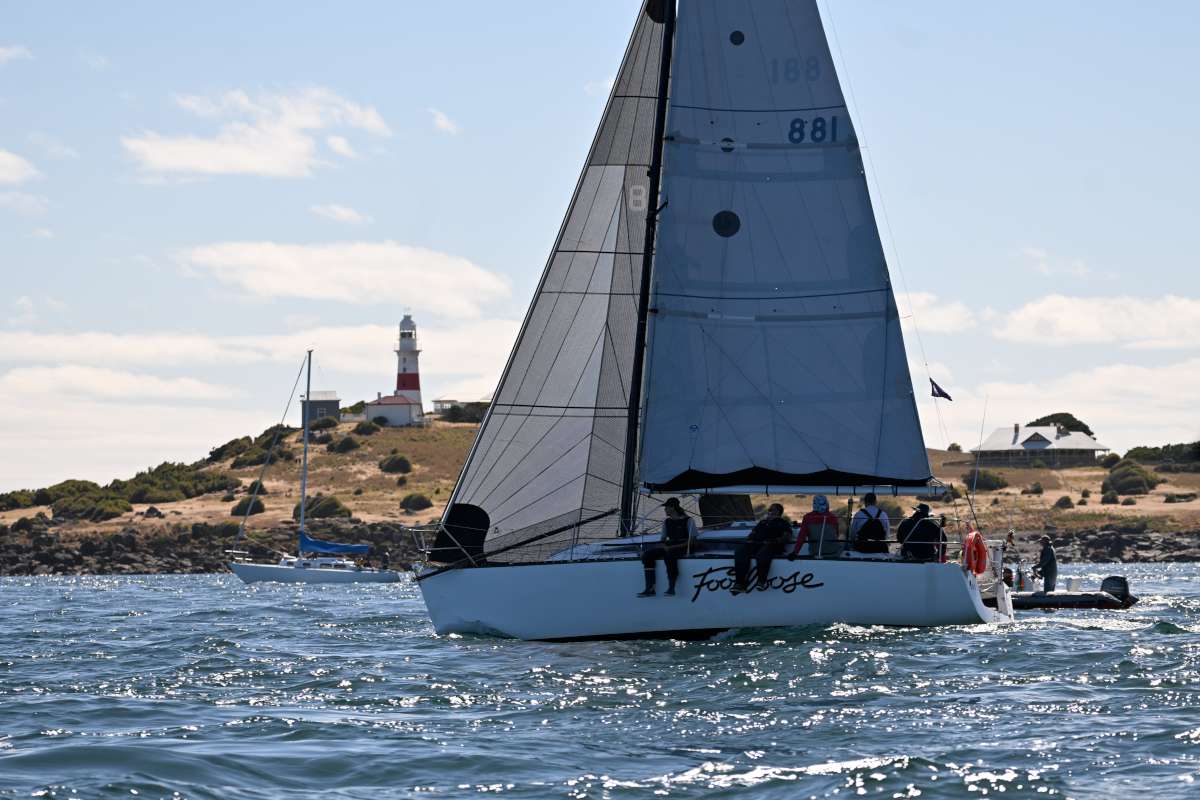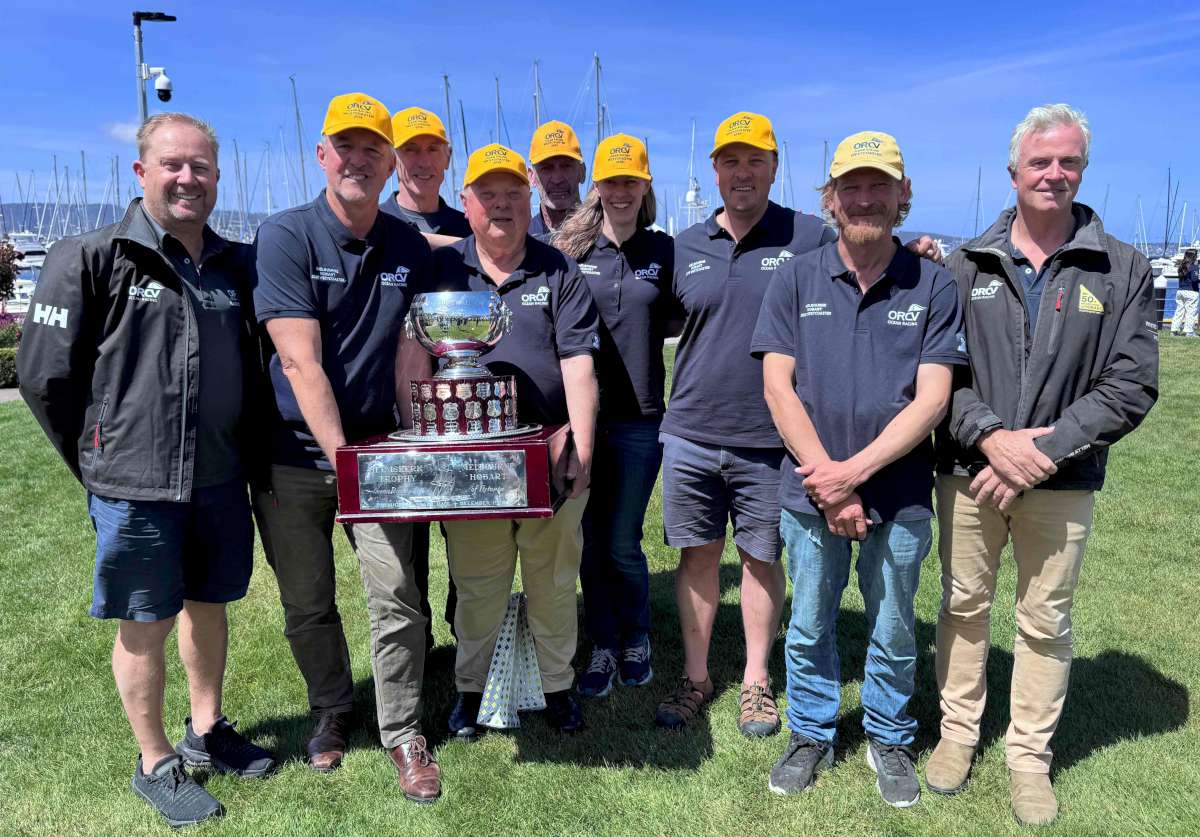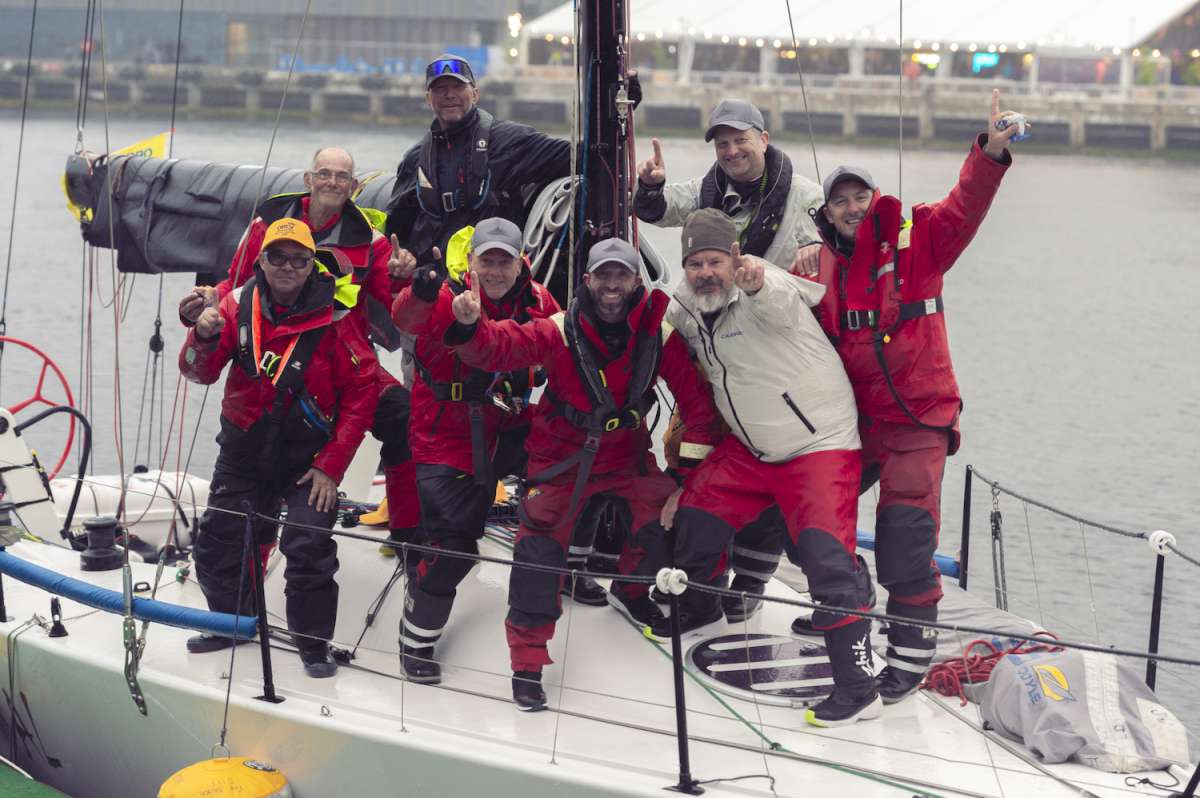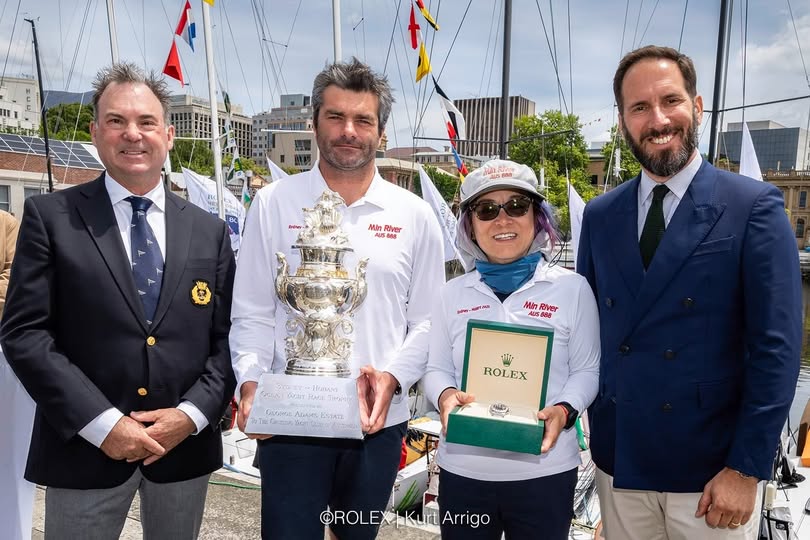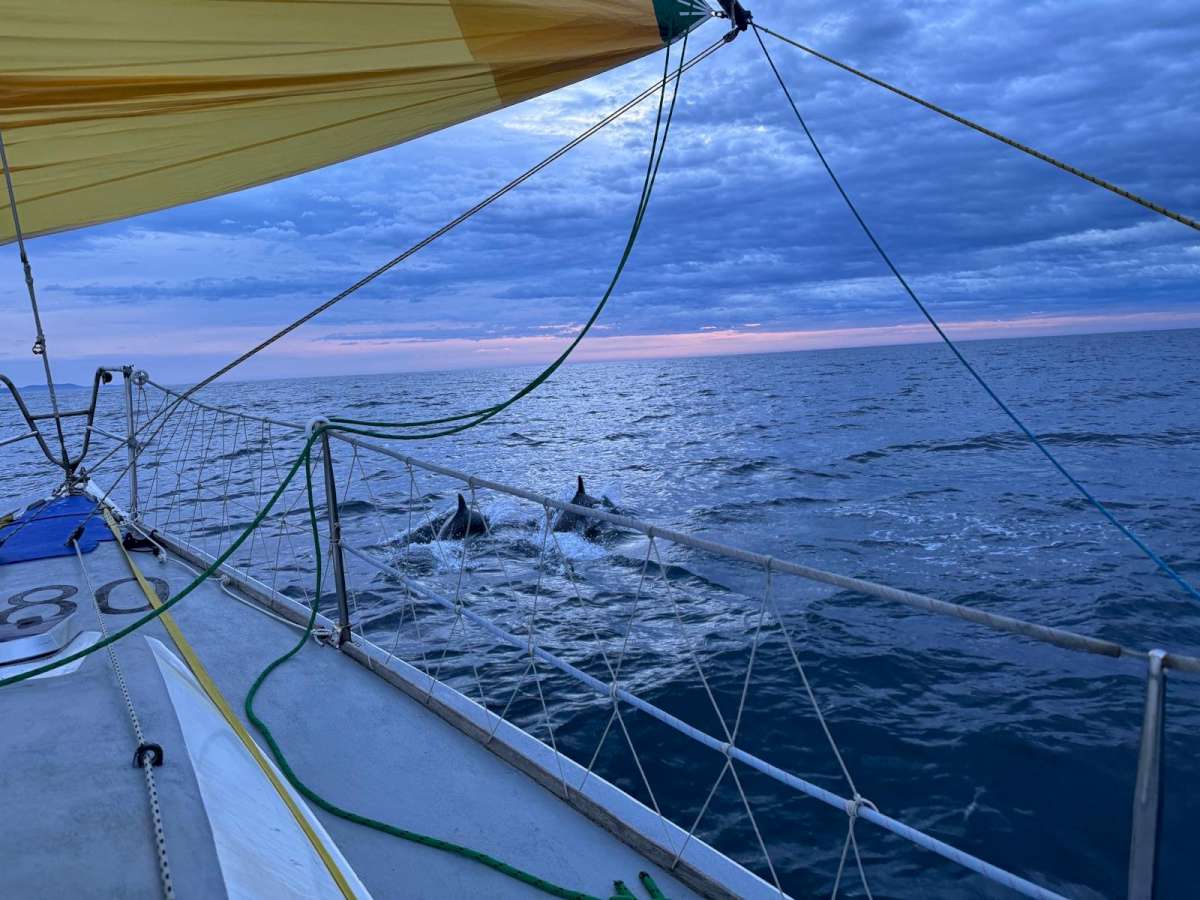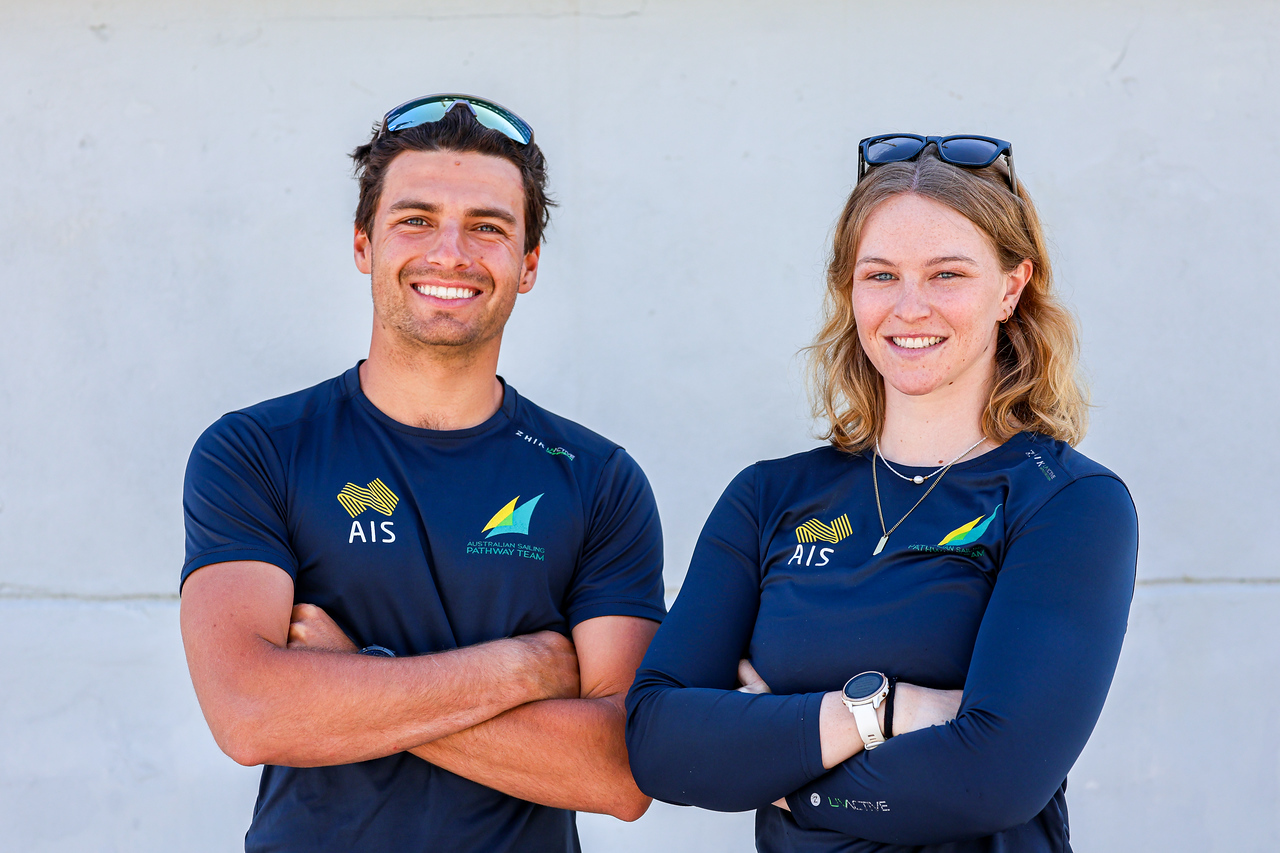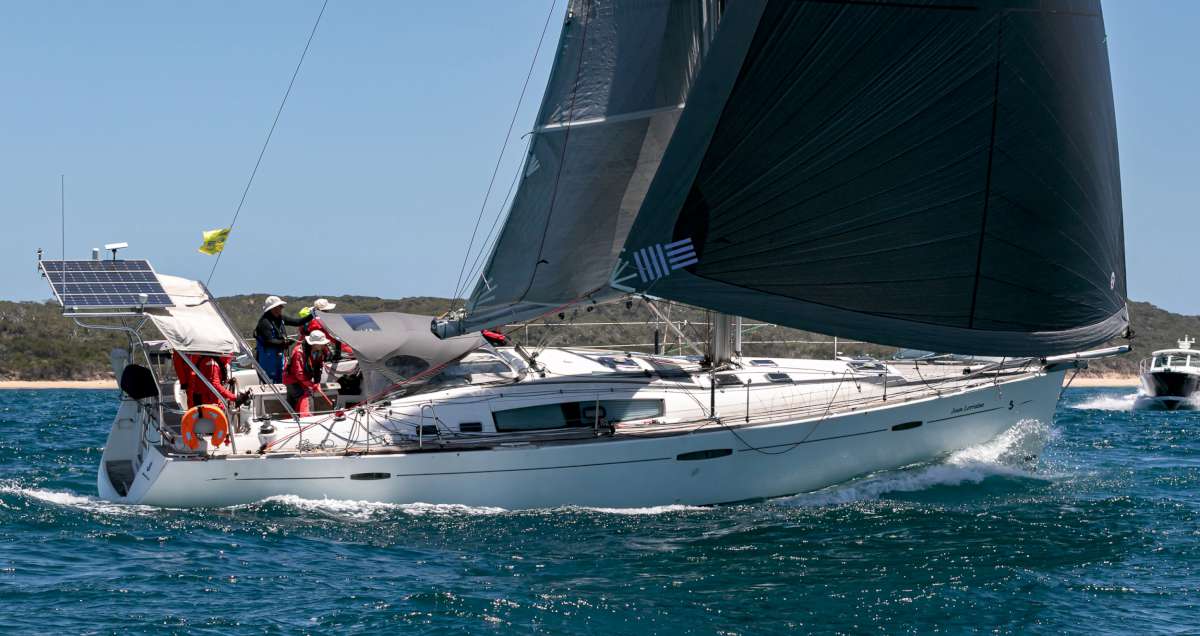It was not really an auspicious start to the cruise on Windjammer.
Our early 0500 departure from Puerto Natales in southern Chile stretched out to an 1800 departure when we tried to raise our anchor and found that it was fouled. None of the crew fancied entering the 5° Celsius water so, with broken Spanish, we arranged for a diver to come and free it.
Jonathon with his ten millimetre thick wetsuit looked much more suited to the task, but it proved no simple matter. Jonathon tried to explain the situation in his very fast Spanish, but the more blank the look on our faces the louder he spoke.
Eventually we understood that the fluke was firmly embedded in an old rusty mooring chain and it was not until he enlisted a second diver and a crowbar that he was able to free our anchor and we could get under way. The longest day of the year turned out to be a very long day for us indeed and it was not until 2300 that we finally went to bed safely moored in Bahia Easter.
Under way
Next day began a little more encouragingly and having dropped the shore lines and raised the anchor we were shortly passing through the narrow Angostura Kirke. Fortunately, the tide was with us and we were soon being whisked along with three knots of current. The weather was typical for this part of Patagonia, the wind anywhere from 10 to 40 knots with rain showers and patches of sunshine.
This makes for very distinctive viewing with the moods changing at every variation. Clouds streamed from the lee of mountain tops and curtains of precipitation hung lazily from the
low overhead scudding haze.
With the channels meandering through steep sided mountains we motored for the first part of the day. As we continued along Canal Smyth and it straightened a little we were able to unfurl the balloon jib for a pleasant sail to Bahia Mallet, our overnight anchorage.
We quickly settled into a routine for mooring each night. Ashley would helm the boat with his wife Cathie doing the navigation. As we approached the anchorage we would lower the dinghy into the water and I would drive Nick ashore with the first of our 100 metre floating lines which Nick would secure around a convenient tree or rock while Adrian would look after the anchor windlass up in the bow.
With the anchor down and one line secure we would go back and bring a second and sometimes a third line ashore. It is not always as easy as it sounds to find a suitable tree around which to secure a mooring line. There is only a thin cover of topsoil above the rocky under layer and sometimes Nick had to scramble up near a vertical face of sodden moss to reach a stout enough specimen.
The following day we continued down Canal Smyth assisted by the prevailing north westerly winds. Due to the widely varying intensity of the wind we alternated between the staysail and the balloon jib.
We meandered down Canal Smyth which directs the wind between glacier-scarred granite domes lining the sides. The sight of a huge rusting hulk of a shipwreck reminded us of the awesome power of the wind and waves in this area.
At the end of the day we entered Caleta Toekita through a narrow cut that was barely wide enough for Windjammer to squeeze through. Once inside the entrance the Caleta opened up and with anchor and three lines ashore we felt secure enough to settle in for a couple of nights and enjoy a relaxed Christmas day.
While Cathie cooked up a feast in the oven-warmed galley, the rest of the crew took the opportunity to explore ashore. We were made fully aware of the blustery conditions when we climbed the low ridge above the sheltered Caleta and we felt the full force of the wind as it tried to bowl us over.
Above the protection of the Caleta the low vegetation clung for life to thin scrapings of soil between the weather beaten rocks. Mosses, lichens and reeds predominate in the bare sodden landscape with the occasional low stunted tree growing horizontally, its trunk stripped bare of bark by the wind.
This is in sharp contrast to the protected steep banks next to the water where a vast variety of plant species flourish.
There is nothing as good as a huge Christmas dinner eaten while the wind whistles through the rigging. Patagonian roast lamb with mint sauce and fresh vegetables washed down with fine Chilean red wine and followed by trifle for dessert with a digestive of Sierra Morena Rum from the Dominican Republic. There may have been a bit of extra snoring that night, but nobody was awake to hear it.
On Boxing Day we venture into the Straits of Magellan where the guide book advises “powerful depressions are continually created……..is characterised by distressingly constant bad weather. ………….this section is brief but the worst in all Patagonia”!
We were able to sail with balloon jib, staysail and one reef in the foresail in the 25-30kt SW wind.
Snow falls to a low level on each side of the straits, we experienced hail and rain.
There was a definite chill in the air and all our talk was about the cold and how it will only get colder. We made good progress along the straits and anchored in Caleta Playa Parda for the night.
Another wonderful day dawned in Patagonia. Caleta Playa Parda is a beautiful natural basin with two levels. At sea level the anchorage is well-protected and is a favourite with fishermen sheltering from storms.
The upper level basin is surrounded by snowy peaks feeding snow melt into a large lake. We climbed up to the ridge for a great view overlooking the lake, with Windjammer below us at anchor and beyond the Magellan Straits. Once again the weather favoured us. More snow fell overnight but during our morning walk we only had one small flurry.
The favourable winds continued and we sailed on under balloon jib and full foresail. A pod of 12 Orcas cruised by in the opposite direction; oblivious to the excitement they created onboard Windjammer. How graceful these animals are as they glide effortlessly through the water.
We tucked into Bahia Borja for the night and anchored with two lines ashore.
In the morning we took advantage of some sunny weather to walk up a hill and gaze out over the Straits of Magellan. These small daily excursions provide some welcome exercise and there was always some intriguing flora and fauna to see.
Stout waterproof boots are essential to keep your feet dry in the sodden landscape. We found walking in boots with a good tread much easier than walking in flat soled sea boots normally worn on boats. Boots also need to be large enough for you to wear an extra pair of socks for warmth.
The clear skies did nothing to help our progress as we motored most of the day into a light headwind. We caught sight of Cape Froward, which at 53°57’S is the most southerly point of the South American continent, before turning into Caleta Hidden for the night.
This aptly-named Caleta was home to a flock of flightless Steamer Ducks. To escape danger they run across the surface of the water using their wings as paddles throwing great sprays of water in the air similar to old paddle steamers.
But the fair weather did not last long and the next day was bleak with nonstop rain all day.
We were away early to arrive at Pas O’Ryan at slack water, because at other times the current can run at up to eight knots. This shallow passage took us south to Canal Cockburn and our first sight of Tierra del Fuego.
Stunning scenery
Not far along Canal Cockburn we turned down Seno Chico for our first encounter with a Patagonian glacier, the Piloto Glacier. Despite the persistent rain it was impossible not to be impressed by the huge tongue of ice winding down the mountain and ending as a monstrous jagged wall of ice crumbing into the water.
Ashley brought Windjammer in close to the ice face and we could clearly hear the cracks and groans of the imperceptibly moving ice. We grabbed some of the floating glacial ice and it made a delicious addition to our evening’s rum.
Sheets of water cascaded down the bare granite faces of the surrounding hills as we made our way to Caleta Lago for the night. We moored to a Ñirre tree, delicately perched atop a mossy rock. It was embarrassing to demote this exquisite creation of nature to the mere status of a bollard.
In the morning we took the dinghy for a tour to admire Windjammer tucked in tightly against the sheer granite cliffs that extend all the way up to a gleaming glacier. We then motored along Canal Cockburn and at the western end we caught a glimpse of the Southern Ocean in all its glory.
A beam sea rolled us around and flurries of snow clouded the chilled air, so we were happy to duck into Canal Occasion and the quiet water of Caleta Brecknock for the night.
A magnificent rainbow at dusk framed the stark granite walls of the Caleta and seemed a fitting closure to yet another memorable day in Patagonia.
Ashley called a layday and we took a walk up to a nearby hanging lake, shrugging off the occasional snow falls to wait for the inevitable following shafts of sunlight.
On return we feasted on fish gumbo and bread freshly baked by Cathie. Despite hail settling on the deck, we were all snug and contented below as our diesel heater glowed merrily and we welcomed in the New Year in a contented unfussed way.
The New Year heralded a cold and bitter day as we made our way out of Canal Occasion and into Canal Brecknock. The wind increased to 30+kts and with just the staysail we made good progress. Because of the cold, biting wind we stood only one hour watches and Cathie’s hot chocolate and banana cake further eased the duress.
The wind can be quite unpredictable with bullets of wind rolling down from the snow-capped mountains tops and stinging hail-filled squalls pushing herds of wavelets along before them. Generally these blasts are short lived and because they contain only small quantities of precipitation they are not particularly troublesome. In fact they add drama to the constantly changing vista with feathery wisps sweeping across huge granite domes with shafts of sunlight sporadically piecing through leaden skies and illuminating their gleaming flanks.
We even had the occasional Condor keep an eye on us from high above. Caleta Emilita was our anchorage for the night and again the heater was called into action to keep the boat warm and dry down below.
Glaciers
Bacon and eggs for breakfast had the crew in a relaxed Sunday morning mood (despite it being a Thursday) as we sailed down Canal O’Brien and into Canal Beagle. For the whole trip from Puerto Natales we passed through uninhabited wilderness and for safety were just required to e-mail the Chilean Armada (navy) with our nightly anchorages, but as we approached the border with Argentina we began to encounter officialdom with the Armada maintaining control stations along many of these otherwise deserted canals.
Generally one man and his family are stationed in these lonely outposts for 12 months at a time and each passing vessel must check in by VHF. This was always carried out in a friendly and courteous manner, but it can become tedious when the stations become closer together and it does detract from the overall wilderness experience.
We travelled along the Canal Beagle until we found the entrance to Seno Pia. We motored up the eastern of the two arms to view the Romanche Glacier. Any risk that we might have become blasé about the scenery was blown away by the grand scale of the landscape.
With very deep water right up to the face, our only restraint to getting close to the face was prudence at having the 60m high ice cliff collapse on top of us. Our anchorage for the night at Caleta Beaulieu faced straight onto one arm of the Romanche Glacier and was absolutely stunning, especially the following morning when sunshine and absolute stillness gave a perfect mirror of the Cordillera Darwin in the surface of the Seno.
In the morning we tried to go up the western arm of Seno Pia, but the large amount of ice in the water made this unfeasible. We continued down the Beagle Channel appreciating the numerous glaciers which tumble down to the edge of the Canal.
This stretch of the Beagle Canal is popular with cruise ships because of the easy, yet spectacular, viewing of glaciers.
Caleta Olla was our next stop. We saw a large Guanaco standing on the beach, watching as we made our way by dinghy to a walking track that took us to a lookout where we could see beavers, which were introduced many years ago to supply the fur trade, building dams in the alluvial river bed. We did our part towards their eradication by having some tasty beaver stew when we arrived at Puerto Williams.
End of the line
In the morning, with the wind still in the SW we set balloon jib and foremain to sail down Canal Beagle towards Puerto Williams. However, soon we were furling the balloon jib as the wind increased. 30kts built to 40kts and then 50kts with gusts to 65kts and it was too fresh to put a reef in the foremain as Windjammer surged.
It was not until we found a little shelter at the entrance to Canal Murray that we could safely drop the foremain.
We would have liked to sail down Canal Murray to visit Cape Horn before going to Puerto Williams, but the Chilean authorities will not permit navigation by foreign boats down this waterway. This is mostly to obstruct the Argentineans in Ushuaia from taking a short cut south, but every other nationality is inconvenienced too.
Instead we pulled into Caleta Victor Jara where, despite being protected from the waves, we still had the wind howling through the rigging. So strong were the gusts that we pulled over a large rock on the shore around which we had secured one of our stern lines.
By the morning the wind had abated a little and as we made our way eastwards we were able to hoist some sail. The sun came out and the wind eased further so we hoisted aloft the full wardrobe: mainsail, foremain, balloon jib and even the fisherman.
Windjammer made a fine picture surging along between the snow-capped mountains that line the Canal Beagle.
Thus, our best sail of the trip was saved for last and when we finally entered Puerto Williams and tied up alongside the Club Naval de Yates Micalvi we celebrated our unforgettable trip through the Patagonian archipelago with a well-earned Pisco Sour.
Murray Spence





